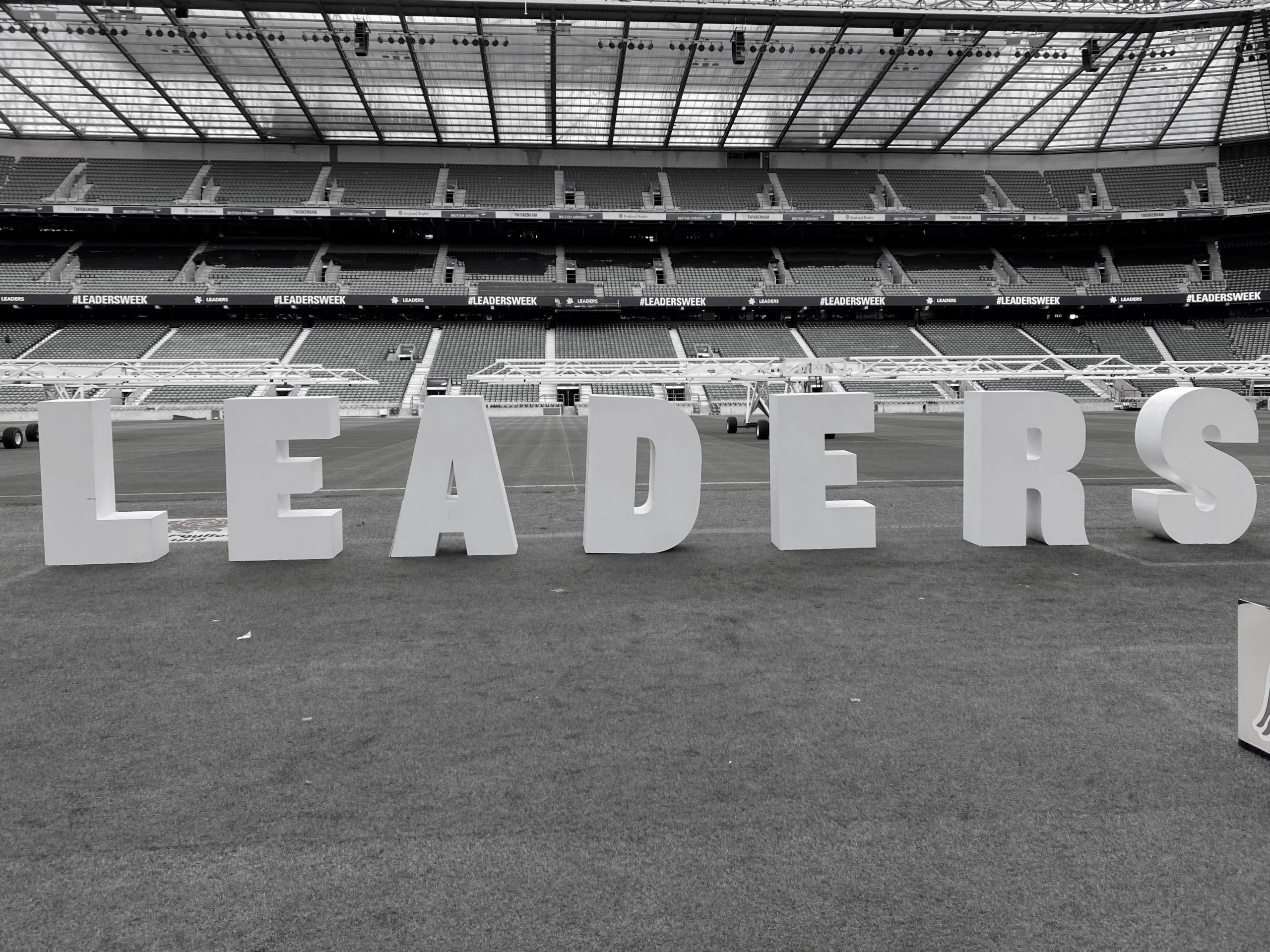Grace Blue’s Managing Partner for the Sports, Media & Entertainment practice, Tim Palmer attended the Leaders conference in Twickenham on the 28 & 29 September. He shares his thoughts here on what’s top of the agenda for sports leaders and organisations and what this means for talent.
Another hugely successful and highly informative leaders’ week has come and gone – it is always a real pleasure to meet and connect with friends, old and new, in our industry. Being present and meeting fellow colleagues led me to conclude connection is the key takeaway this year.
Why connection? Speaking with clients and colleagues, many will agree the sports industry has shifted its focus to direct contact with the consumer, or fan. Whether you’re an agency, a governing body, a league, a club or an athlete, everyone in sport is part of a brand. The fan, that vital end consumer, must be at the very heart of the strategy and connect with everything a sport can deliver.
‘Content’, ‘data’, ‘digital’ and ‘innovation’ have long been hot topics in the sports industry. However, it became even clearer to me at the conference that what used to be buzz words are now fundamental to every strategic decision made by a sports leadership team, given the size and scale of the transformation across our industry.
Things are happening so fast. Media Kind’s 2021 D2C Sports forecast analysis predicts the D2C OTT sector will be the biggest growth area in sports media in the coming decade. New launches are announced every week. New business models and strategic relationships are scrutinised to ensure a return on investment for sport. Digital content and storytelling are at the heart of this transformation.
But sport is not competing against itself for consumer spend; it is competing against music gigs, food festivals and other lifestyle and cultural events. So how does sport attract the more casual fan? Or the super fan that wants more than 80 or 90 mins of live sport at the weekend? It all comes back to that connection.
Continuous content is a must for attracting, engaging, and keeping your fan connected. The data they provide fuels this strategy and shapes your output. Mike Emery, CEO of Joymo ( a streaming platform aimed at sports rights holders) summed it up perfectly: ‘Ultimately, the better you know fans the stronger your negotiating position and ability to dictate rights fees (and commercial deals) based on the data your audience provides you. Turning supporters into subscribers is absolutely key but keeping them as engaged customers by providing the content and products they demand is essential for sustainable long-term success’ (The Sports Tech Group)
At Leaders, Donata Hopfen, CEO at the Bundesliga and a digital specialist, spoke about how Bundesliga plans to expand its international audience and develop further products, all key to revenue growth. Hopfen describes a time of innovation, transformation, and change, with competition for audiences and fans taking place on a global scale. Therefore, servicing your audience, or that connection with your fan base, is more important than ever. It’s clearly a strategic objective for the Bundesliga.
That need for a greater level of connection is true across all sports. As recently as 09 October, World Rugby acquired the digital platform, Rugby Pass, which reaches a monthly audience of over seven million. Commenting on the acquisition, World Rugby chief executive Alan Gilpin said: “World Rugby’s mission is to grow the global rugby family. To do that, rugby must be more accessible and more relevant to more people more of the time and we must create deeper relationships with those who love the game, those who are casual fans and those who are yet to discover our sport.”
There it is again. Connection. A streaming strategy to foster this is more important than ever. New advancements are continual, for example, FAST (Free Ad Supported Streaming Television) is establishing itself as a major sports media player, alongside traditional broadcast, D2C and rights syndication. Omdia describes it as a $4bn ad revenue industry, predicted to reach $10bn by 2027. FAST has seen growth in the US as the demand from consumers for free linear TV experience while major brands like Paramount, Fox and Comcast have entered this space, all serving to increase ad revenue and engagement with a wider audience. There’s money to be made in strengthening that connection with fans.
What does this mean for current and upcoming talent in the global sports industry?
They need to demonstrate they know how to build the strongest, most compelling, and unbreakable bond between the sport they work in and its all-important fan base. The best talent will be agile, experts in digital developments and solutions with a finger on the pulse of emerging technologies and platforms. They will be collaborative, communicative, and importantly willing to listen and ensure the consumer remains engaged.
Above all else though, they will be leaders in the craft of connection. They will know how to identify what really connects your sport with the consumers, whether casual fans or super fans, and they will know how to continually build and strengthen that connection to enhance, enrich and realise the sport experience of your dreams.
